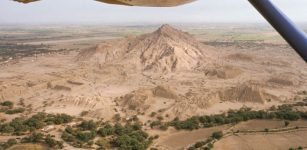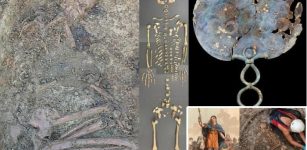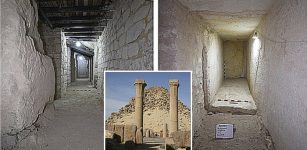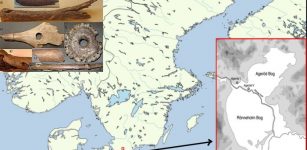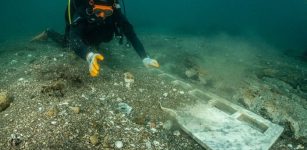Dozens Of Ancient Villages Discovered In British Columbia – The Pit Houses ‘Older Than The Pyramids’!
Conny Waters - AncientPages.com - Archaeological research in the initial phase of a cultural heritage study in British Columbia, Canada, has revealed that the Secwépemc people's historical presence in the Chilcotin region was more extensive than previously thought.
The research team uncovered dozens of ancient villages that were previously unknown. This study, led by Williams Lake First Nation, Esk’etemc, and Inlailawatash LP, is crucial for gathering and preserving historical data at risk due to events like the Chilcotin Landslide.
Credit: Williams Lake First Nation
The survey covered areas from Hanceville to the mouth of the Chilcotin River, including Farwell Canyon. While it was known that several Secwépemc village sites existed in this region, recent archaeological findings have provided new insights into a once-thriving division of the Secwépemc Nation that suffered greatly from smallpox in the 1860s.
Whitney Spearing, Director of Natural Resources for WLFN, highlighted these discoveries' significance: "These pit houses are older than the pyramids! It’s incredible that we’re still uncovering new insights about communities that thrived here for thousands of years."
During this phase, 70 archaeological sites were identified. Of these, 31 are pre-contact Secwépemc village locations, and seven feature sacred elements like burials, caves, and rock art. During this phase of the study, it was observed that nearly half (49%) of the sites had been impacted by natural occurrences such as landslides and the 2017 Cariboo-Chilcotin wildfires.
The study commenced immediately after a landslide on July 31st and utilized GIS modeling, LiDAR scans, visual assessments, and fieldwork conducted between August 15th and November 29th. Significant damage threatens Tecwilúps Village (also known as Tsenqlews or Farwell Canyon), Nexelp Village (Pesxenmétkwe), Kwomesken’s Village (Kwellk̓ém̓t), three out of four main documented Secwépemc villages along Kwellk̓ém̓t. Some newly identified sites had never been formally documented before this initiative.
"We always knew there were more than just the four main village sites referenced in Teit’s work," stated Spearing. The Teit mentioned refers to a notable ethnographer from the late 19th and early 20th centuries whose research documented Secwépemc sites.
Historical records indicate that Secwépemc communities, collectively known as Ste’tlemc, were a significant trading power within the Secwépemc Nation in the canyon area. According to a press release, recent archaeological evidence from the study confirms that Ste’tlemc has been present for over 4,000 years.
These findings significantly alter our understanding of history and highlight the deep, lasting bond of the Secwépemc people with their land. In the 1860s, these communities suffered greatly due to smallpox, and in 1963, some Esk’etemc homes were destroyed by fire. The few who survived the smallpox outbreaks had to leave their communities and relocate to smaller neighboring Secwépemc villages like Esk’etemc and Stswecem'c Xget'tem.
A model of an ancient pithouse. Credit: Blake Handley - CC BY 2.0
According to WLFN Chief Willie Sellars, "This work transcends archaeology; it is about honoring our Elders' stories, safeguarding sites that embody our people's spirit, and ensuring future generations can experience these lands with a deep sense of understanding and connection."
The scientists explained that as they move into phase two of the study, the focus will shift to conducting further field research. This includes assessing damage to cultural sites and developing strategies for their recovery, preservation, and protection against the erosion of time and potential future natural disasters.
See also: More Archaeology News
Williams Lake First Nation is dedicated to fostering unity and respect in efforts to protect cultural sites and strengthen relationships with all parties responsible for land stewardship, according to Sellars. The second phase of the study aims to engage the broader Secwépemc Nation, other First Nation communities, and stakeholders in ongoing efforts to aid site recovery and prepare for future natural disasters.
The release highlights that the Secwépemc people have coexisted with the Tsilhqot'in for centuries, both maintaining profound ties to the land. Williams Lake First Nation remains committed to promoting respectful dialogue and collaboration as they advance together.
Written by Conny Waters - AncientPages.com Staff Writer




